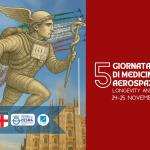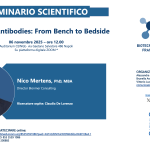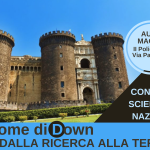
Andrea Ballabio -The Awesome Lysosome
Il 29 aprile, alle ore 16.00, presso l’Auditorium CEINGE, Andrea Ballabio terrà un seminario dal titolo “The Awesome Lysosome”.
Ricercatore ospite: Francesco Salvatore, CEINGE - Biotecnologie Avanzate
Pediatra e genetista, Andrea Ballabio è il Direttore e un Principal Investigator del Telethon Institute of Genetics and Medicine (TIGEM), professore di Genetica Medica presso l’Università degli Studi di Napoli Federico II, Visiting Professor presso il Dept. of Molecular and Human Genetics del Baylor College of Medicine, Jan and Dan -Duncan Neurological Research Institute, Texas, Children Hospital, Houston, TX, Visiting Professor presso il Department of Pharmacology, University of Oxford, UK e Co-Founder CASMA Therapeutics, Boston, MA, USA.
È autore di oltre 300 pubblicazioni su riviste internazionali di alto impatto.
Research focus and achievements
The focus of Andrea Ballabio's research career has been on the elucidation of the mechanisms underlying genetic diseases. The contributions of his laboratory have spanned a wide range of biological processes and human diseases, from X chromosome-inactivation (the discovery of Xist), axonal targeting (Kallmann syndrome), melanosome biogenesis (Ocular albinism), mitochondrial biogenesis (Hereditary spastic paraplegia), embryonic development (Chondroplasia punctata and Opitz GBBB syndrome) and post-translational protein modification (Multiple sulfatase deficiency) to name a few. In the past few years he has focused his research on the lysosome and on the role of lysosomal dysfunction in lysosomal storage
diseases (LSD) and common neurodegenerative diseases. His group discovered that in LSDs lysosomal dysfunction leads to a block of the autophagic pathway with consequent accumulation of autophagy substrates, which contributes to the development of neurodegeneration in these diseases. More recently, his group discovered that lysosomal function and autophagy are subject to a global transcriptional regulation, which is mediated by the master gene TFEB. This regulatory pathway allows the lysosome to respond to environmental cues such as starvation, physical exercise, infection, and a variety of stress conditions. TFEB mediates a lysosome-to-nucleus signaling mechanism that originates from the lysosomal surface and is regulated by the mTORC1 kinase. Induction lysosomal biogenesis and autophagy via TFEB has proven to be a potent tool to promote cellular clearance in LSDs and neurodegenerative diseases.
His main research goal is to achieve a deep understanding of the biological mechanisms regulating and mediating lysosomal function and to translate basic lysosomal biology discoveries into novel therapeutic strategies for lysosomal diseases.
ABSTRACT
In the early 50s, Christian De Duve identified a new cellular structure, the lysosome, defined as the cell’s “suicide bag”. Sixty years later, it is clear that the lysosome greatly exceeded the expectations of its discoverer. The lysosome mediates intracellular clearance by degrading and recycling a variety of substances that reach this organelle through endocytosis, phagocytosis and autophagy. Over 50 different types of lysosomal storage diseases have been identified, each due to the deficiency or malfunction of a specific lysosomal protein. In addition, an important role of the lysosome has been unveiled in several common human diseases, such as cancer, obesity, neurodegenerative diseases, and infection. We have identified a lysosomal gene network and a master gene, TFEB, that regulates lysosomal biogenesis and autophagy. TFEB and its gene network enable the lysosome to adapt to environmental cues, such as nutrient availability. The activity of TFEB is regulated by the mTORC1 kinase complex through a lysosomal signaling pathway. Phosphorylation and subcellular localization of TFEB are strongly influenced by the activity of RagGTPases, which are activated by nutrients via a lysosome-dependent signaling pathway. Recent data in our laboratory indicate that TFEB nuclear export is mediated by the CRM1 exportin and is controlled by mTOR through a hierarchical phosphorylation of specific serine residues. In addition, TFEB subcellular localization is regulated by a lysosomal calcium signaling pathway that is mediated by the lysosomal calcium channel TRPML1 and the phosphatase calcineurin. Finally, we found that TFEB and mTORC1 are involved in a feedback loop that is mediated by the RagD GTPase. This feedback mechanism plays an important role in the response to starvation and physical exercise and is deregulated in cancer. Overall these data reveal that the lysosome acts as a signaling hub that signals to the nucleus through the shuttling of the TFEB transcription factor to control cell homeostasis and the switch between anabolism and catabolism.





